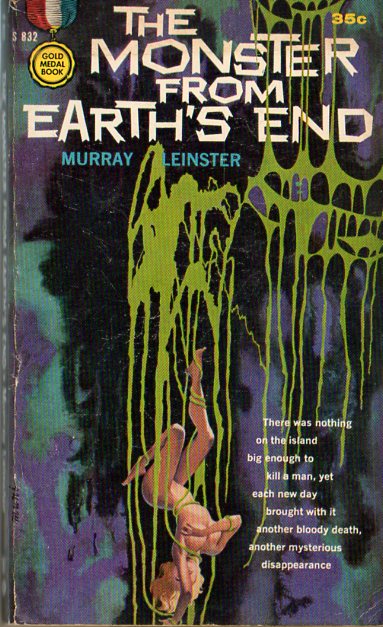"Mission: Interplanetary" by A.E. van Vogt (aka "Voyage of the Space Beagle")
And now we move to one of the great SF classics of the Golden Age: A. E. van Vogt’s The Voyage of the Space Beagle, the tale of an intrepid crew of space explorers and their adventures on distant and deadly worlds, frequently cited as an obvious influence on both Star Trek and Alien.
But first, a few words about A. E. van Vogt, one of the greatest and most prolific writers of SF’s Golden Age, whom we haven’t discussed much at Black Gate (probably because he didn’t write a lot of fantasy). I read his classic novel Slan (1946) at an early age, and it had a big impact on me, pulpy and simplistic as it was. Van Vogt wrote nearly 40 SF novels between 1946 and 1985 — including the classics The World of Null-A (1948), The Weapon Shops of Isher (1951), and The War against the Rull (1959) — and published two dozen short story collections. He received the 14th Grand Master Award by The Science Fiction Writers of America in 1995.
Van Vogt has taken something of a beating from modern critics for his pulpy style and rather sloppy plotting, but he had many ardent fans, including Philip K. Dick, who said:
"There was in van Vogt’s writing a mysterious quality, and this was especially true in The World of Null A. All the parts of that book did not add up; all the ingredients did not make a coherency. Now some people are put off by that. They think that’s sloppy and wrong, but the thing that fascinated me so much was that this resembled reality more than anybody else’s writing inside or outside science fiction."
The Voyage of the Space Beagle (the title is an homage to Charles Darwin’s famous scientific memoir The Voyage of the Beagle) is unapologetic pulp SF, and could only have been written in the Golden Age of Science Fiction. Truth to tell, you need a mild tolerance for pulp fiction to fully enjoy it these days. But if you don’t have that, you have no soul, and we can’t be friends.
Space Beagle is a “fix-up” novel (a term coined by Van Vogt), meaning it was cobbled together from short stories originally published separately. The four stories contained within are:
Chapters 1-6: “Black Destroyer” (Astounding Science-Fiction, July 1939)
Chapter 7: New material
Chapters 8-12: “War of Nerves” (Other Worlds Science Stories, May 1950)
Chapters 13-21: “Discord in Scarlet” (Astounding Science Fiction, December 1939)
Chapters 25-28: “M 33 in Andromeda” (Astounding Science-Fiction, August 1943)
“Black Destroyer” is the tale of a deadly carnivorous cat-like alien, the coeurl, who stalks the crew of an exploration spaceship. Van Vogt’s first published short story, it made the cover of the July 1939 issue of Astounding Science Fiction.
The story immediately catapulted Van Vogt to the front rank of SF writers. In fact, this issue of Astounding is commonly accepted as the one that ushered in the Golden Age of Science Fiction. There were other star contributors (including C.L. Moore, Nat Schachner, Nelson S. Bond, and the first appearance of a young Isaac Asimov), but it was “Black Destroyer” that readers remembered.
The crew of the Space Beagle returned five months after the appearance of “Black Destroyer” in the much longer story, “Discord in Scarlet,” published in the December 1939 issue of Astounding Science Fiction.
Space Beagle was first published in hardcover by Simon & Schuster in 1950 . That’s a very rare and collectible book today. The first paperback copy was published by Signet in 1952, under the title Mission: Interplanetary. (John O'Neil, Black Gate)



Comments
Post a Comment